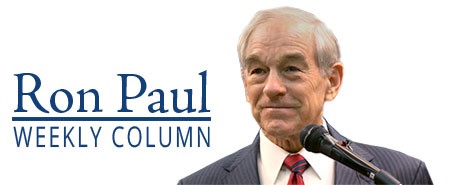
Breaking News
 Dr. Ron Paul interview with Meditation Magazine
Dr. Ron Paul interview with Meditation Magazine
 Tuesday War Room LIVE: Tune In For LIVE Election Day Coverage, As New York City Poised...
Tuesday War Room LIVE: Tune In For LIVE Election Day Coverage, As New York City Poised...
 Slowing climate change by using aerosols to block sunlight? Maybe not such a good idea
Slowing climate change by using aerosols to block sunlight? Maybe not such a good idea
 Las Vegas Cybertruck bomber's classified confession: Mystery as police suppress key details...
Las Vegas Cybertruck bomber's classified confession: Mystery as police suppress key details...
Top Tech News
 Japan just injected artificial blood into a human. No blood type needed. No refrigeration.
Japan just injected artificial blood into a human. No blood type needed. No refrigeration.
 The 6 Best LLM Tools To Run Models Locally
The 6 Best LLM Tools To Run Models Locally
 Testing My First Sodium-Ion Solar Battery
Testing My First Sodium-Ion Solar Battery
 A man once paralyzed from the waist down now stands on his own, not with machines or wires,...
A man once paralyzed from the waist down now stands on his own, not with machines or wires,...
 Review: Thumb-sized thermal camera turns your phone into a smart tool
Review: Thumb-sized thermal camera turns your phone into a smart tool
 Army To Bring Nuclear Microreactors To Its Bases By 2028
Army To Bring Nuclear Microreactors To Its Bases By 2028
 Nissan Says It's On Track For Solid-State Batteries That Double EV Range By 2028
Nissan Says It's On Track For Solid-State Batteries That Double EV Range By 2028
 Carbon based computers that run on iron
Carbon based computers that run on iron
 Russia flies strategic cruise missile propelled by a nuclear engine
Russia flies strategic cruise missile propelled by a nuclear engine
 100% Free AC & Heat from SOLAR! Airspool Mini Split AC from Santan Solar | Unboxing & Install
100% Free AC & Heat from SOLAR! Airspool Mini Split AC from Santan Solar | Unboxing & Install
The Best Way to Protect US Troops in Syria by Ron Paul

After the US retaliation, another strike by "pro-Iran" forces hit a number of US sites in Syria. It may be just a matter of time before there are more strikes against the 900 US troops based in Syria against Syria's wishes. One US contractor was killed last time. Next time it could be many more Americans.
What's behind the sudden escalation? Fundamental changes in the Middle East over the past month have highlighted how indefensible is the continued US occupation of Syria and Iraq.
Take, for example, the recent historic mending of relations between former arch-enemies Saudi Arabia and Iran which was brokered by Washington's own arch-enemy, China. US policy in the Middle East has long been "divide and conquer," dating back at least to the Iran/Iraq war in the 1980s. US switching sides in that war guaranteed that the maximum amount of blood was spilled and that the simmering hatreds would continue to prevent any kind of lasting peace.
Then the US invaded Iraq twenty years ago and turned Iraq into an Iranian ally. That's neocon foreign policy for you: a 100 percent failure rate.



